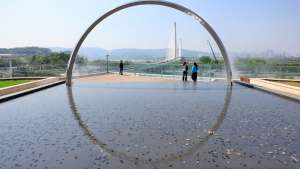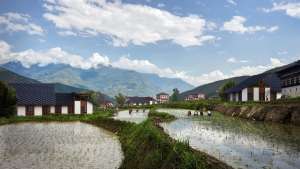
As levels of atmospheric carbon dioxide, global warming, and pollution continue to increase and become aggravated by population expansion, it is crucial that designers across all disciplines begin exploring ways in which to manage this growth. Urban areas, though, are facing the bulk of this pressure. Today, more than half the global population live in cities, but it is estimated that this figure will rise to 75 per cent by the year 2040.
According to Martha Thorne, Dean of the IE School of Architecture and Design and Executive Director of the Pritzker Architecture Prize, the challenge within these conditions is manifold. “Generally speaking, cities with larger populations are more efficient and better equipped to provide urban services, mobility, energy, education, and healthcare,” she says, “The downside is when rapid population overgrowth produces imbalances that make the city stop working.”
With housing shortages, public safety and pollution all proving to be immensely burdensome within these denser areas, and the UN predicting that the global population will rise to over 9 billion by the year 2050, how can creatives, designers, and architects begin to address this?
HOUSING
Sustainable housing solutions will be a key factor in managing continual population growth - particularly within the context of rapidly growing city spaces. The following architectural interventions are methods that we think could help guide city planners as urban housing supplies continue to be placed under strain worldwide.
ELEMENTAL

Two-time Design Indaba speaker Alejandro Aravena’s ELEMENTAL proposes the building of half a good house on prime real estate land, rather than a small bad house on the outskirts of the city. Using basic skills, residents can construct the other half over time according to their own needs and financial status. “The challenge of architecture,” explains Aravena, “is to be capable of departing from outside of architecture, into that environment of ambiguous problems that matter to society.”
TINY HOUSE MOVEMENT

An architectural and social campaign that advocates living simply in small homes, the Tiny House Movement could have significant impact when it comes to providing for an expanding population. Modular and prefabricated, the entire structure of one of these homes is smaller than 46 m2. North American company Tumbleweed, has become the continent’s largest manufacturer of tiny house recreational vehicles, and the company is also reportedly capable of producing green rv’s.
The advent of tiny houses also presents an appropriate manner for older members of city populations to downsize, as they are demonstrating increasingly longer life expectations.
RESOURCES
The world will need more food in the coming decades as the number of people on the planet continues to grow - this goes for both urban and rural areas. Here are some solutions we think could have the biggest impact on the food sources within our rapidly expanding metropolitans.
VERTICAL FARMS

Vertical farms are hydroponic farms inside multi-storied buildings, a concept championed by Dickson Despommier, an environmental health professor at Columbia University. Requiring less energy and producing a fraction of the pollution of traditional farming methods, vertical farms use indoor farming techniques and controlled-environment agriculture technology, and integrates renewable energy technology like solar panels. Several companies, including, have even developed stacking recycled shipping containers outfitted with vertical hydroponics, LED lighting and intuitive climate controls that can also produce food in the limited spaces of cities.
DRIP IRRIGATION

A type of irrigation system that has the potential to save water and nutrients by allowing water to drip slowly to the roots of plants, drip irrigation places water directly into the root zone of the crop and minimises evaporation. Maintaining farms is an enormously expensive exercise and when it comes to feeding a growing population, this may be the most practical method with which to handle to irrigation of food crops. Studies show that drip irrigation systems use 30 – 50% less water than conventional methods and can potentially double the amount of food produced.
POLLUTION
Because of the high number of residents in urban areas, an enormous amount of waste gets generated within these locations daily. Improper dumping, and vehicle/industrial emissions all contribute to poisoning our air, water and soil. These are some of the solutions that could be implemented in dense urban areas to improve residents quality of life and ease the amount of contaminants ingested.
INCREASE THE AMOUNT OF GREEN AREAS

When it comes to pollution in densely populated areas, abundant green areas are of vital importance. These can be in the form of community gardens, which gives the community a place to congregate and become more educated about where their food comes from, or in the form of urban parks. The trees in these spaces aid in the removal of a wide variety of pollutants from the air, and also help to reduce the urban heat island effect - wherein human activity causes the urban area to become warmer than its surroundings.
COMPOSTING TOILETS

Reusing our waste will be increasingly important in the new world of 9 billion people. Current toilet designs could take a leading role in sanitation processes, and a recent invention by a Cape Town university lecturer, the SaniHive, is a self-sustaining toilet that converts waste into fertiliser and compost. Utilising the least amount of resources to operate, the SaniHive contains a urine-treatment process as well as a faeces-collection system for eventual composting.
Read more about innovation in housing and waste solutions here.
LifeArk off-grid housing is focused on sustainable community transformation
This Icelandic designer is making vodka out of food waste
Ukubutha: A waste-to-energy solution to mobilise residents in informal settlements






